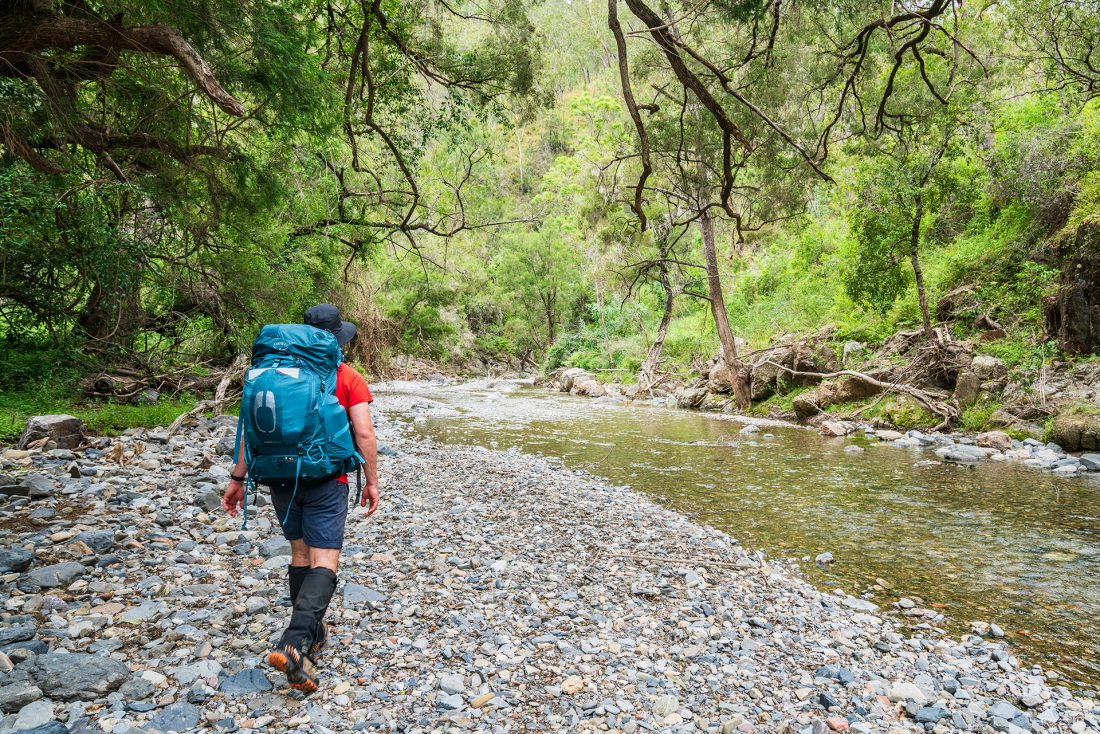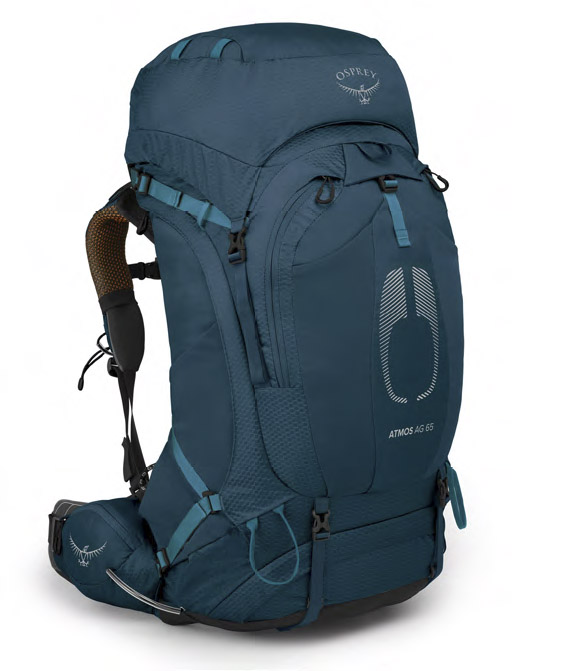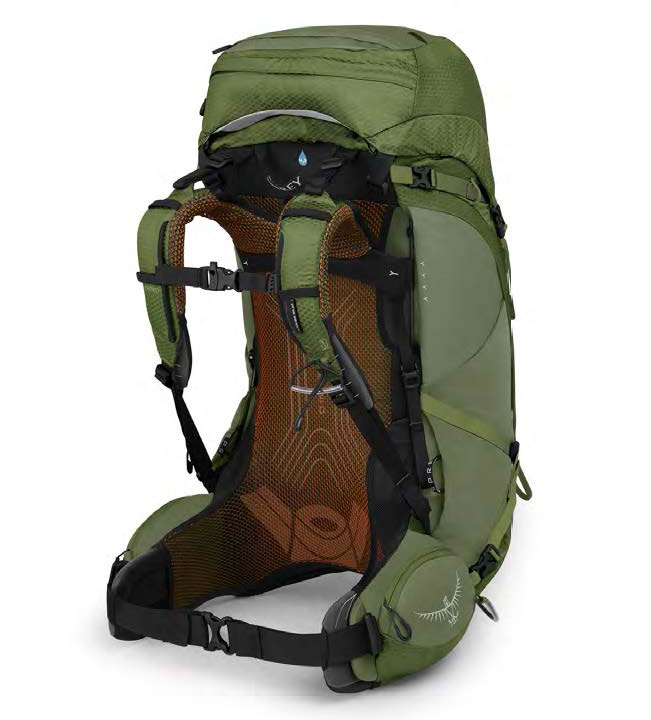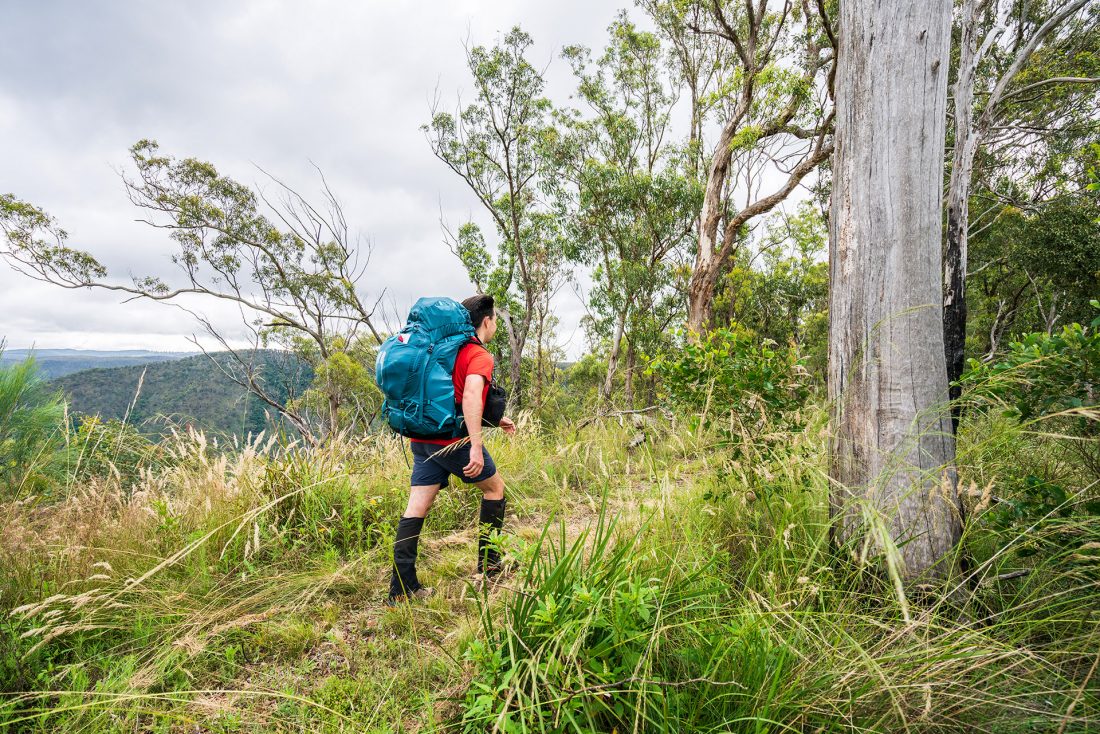
GEAR REVIEW
OSPREY
ATMOS AG 65
The 2022 update of Osprey’s Goldilocks, not-too-big, not-too-small pack which adjusts to suit nearly everyone.
(This story originally featured in Wild #183, Autumn 2022)
By Ryan Hansen
When my grand plans for a summer of Tassie bushwalking derailed thanks to that which shall not be named, a northern-NSW road trip beckoned as a more-than-suitable replacement. But this drastic change in destination meant that my previously scheduled 7+ day bushwalks in Tas would now be no more than 3-4 days at a time, and that realisation introduced a dilemma: What pack should I take? My lightweight 40L pack that I could squeeze four days out of at an absolute stretch—and in the process, probably break a strap—or my 85L canvas rucksack that would be overkill for the conditions? After much umming and ahhing, I decided I needed a mid-volume rucksack better suited to these intermediate length walks. Something in the 60-65L range would be good, I thought. Enter the Osprey Atmos AG 65.

The Atmos (male version) and Aura (female version) come in 50L and 65L options, although the exact volume varies by up to 3L depending on the harness size you go for. With the Atmos/Aura line up having been one of Osprey’s flagship backpacking models for many years, I was excited to see what the hype was all about. I luckily got my hands on a revamped 2022 version of the Atmos, which is slated to be in stores in May 2022.
Throughout my bushwalking holiday, I put the Atmos AG 65 to the test for a total of seven days across two vastly different walks, in what I’d describe as demanding conditions. Hardly classic Tassie scrub-wriggling conditions, but pushing through two solid years of bushfire regrowth isn’t a walk in the park either. Needless to say, the once-immaculate Venturi Blue exterior is now somewhat blackened, though fortunately with no more holes than before. Discolouration aside, the Atmos comfortably passed the induction. So let’s take a look at what impressed me the most.

The first thing that struck me about it was its anti-gravity (AG) harness system. Constructed with a suspended and tensioned mesh back panel, I found it increased air flow and reduced my normally excessive back sweat—a lifesaver during the summer months. The tensioning carries into the hip belt which, when tightened, pulls the weight to the lumbar region of the back. (Ed: I’ve tried this pack on, and the comfort of the hip belt is strikingly good.) What I found particularly impressive with the AG system was its fit-on-the-fly design, providing enhanced comfort; a cam-locking torso adjustment allows the harness length to be easily customised, while both the shoulder straps and hip belt feature extendable padding—a major improvement on earlier models. In essence, where most backpacks offer only a single piece of padding for the shoulder straps and hip belt, the additional padding on the Atmos (velcroed on the underside) can be extended to cater to longer torsos and broader waists, or removed entirely if desired. I particularly appreciated this addition as I find longer shoulder straps more comfortable, and the extendable waist padding accommodated my post-Xmas figure. Some bushwalkers may find the padding to be a little on the firm side, however.
On the subject of volume—the main reason I originally sought this pack—I found the 65L to be ideal for my needs. While it’s difficult to say whether the size is suited to your needs—different bushwalkers carry different things—I found the Atmos 65 was more than sufficient for four days, and there’s enough space for me to get six or seven days (or more) out of it too. I should mention here, though, that I hike with my wife, which means we’re able to share many items; solo hikers won’t have this luxury. Regardless, the main compartment is roomy and has well-considered dimensions, enabling easy packing of interior items. A major drawcard is the hood; as it is floating, it provides good adjustment opportunities, while its two zippered compartments dramatically increase storage space. The external front storage pocket is also cleverly designed, with two zippered pockets (unique to the 65L version) and the standard Osprey shove-it pocket, perfect for stashing jackets or other items in need of quick access.

Other features worth mentioning are the classic Osprey hipbelt pockets, perfect for hungry hikers; the bottom-access zip, which provides quick and easy access to the bottom compartment of the bag; the storage sleeve for a hydration reservoir; and the included raincover, although this doesn’t entirely waterproof the pack. There are also good external straps to secure items to the outside of the bag. I like the fact that the fabric is PFC-free, too. My only real gripe with the design is that—if you’re wearing the pack—it’s a two-person job to remove a water bottle from its pocket.
The Atmos AG 65 is spacious and has cleverly designed features. But what makes it a real winner, in my opinion, is its ability to be finely adjusted to suit different body shapes. The end result is improved comfort.
NEED TO KNOW
Product Class:
Multi-day hiking pack
VOLUME:
65L
WEIGHT (AS TESTED):
2190g (S/M)
RRP:
$479.95

